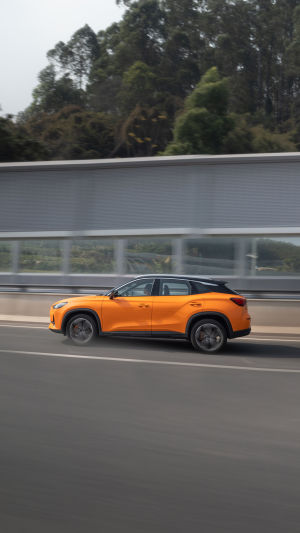Self-driving travel is a type of self-guided tourism that distinguishes itself from traditional group tours.
It represents a new form of tourism where individuals drive their vehicles, providing travelers with flexible choices in terms of destinations, participation procedures, and the experience of freedom.
Self-driving travel possesses inherent characteristics such as freedom and individuality, flexibility and comfort, as well as selectivity and seasonality. In comparison to traditional group tours, it has its unique features and charm.
In simple terms, self-driving travel involves individuals driving their vehicles in an organized and planned manner, with driving as the primary mode of transportation. The rise of self-driving travel aligns with the mindset of the younger generation, who seek independence and freedom of spirit, and self-driving travel perfectly fulfills these needs.
For those who love long-distance self-driving trips, the choice of a vehicle doesn't necessarily have to be the most expensive or the best, but it must be the most suitable for the purpose and enjoyment of the journey. The criteria for this "suitability" are determined by the goals and pleasures of the long journey.
The joys of self-driving travel come in various forms, such as driving towards vast landscapes, fueled by curiosity and passion to explore the unknown, or embarking on a journey with family, enjoying the beauty of distant landscapes with the galaxy as a pillow and the sun and moon as companions. If you're looking to select a car suitable for a family self-driving trip, keep reading.
1. Sedan
Sedans are primarily designed for paved roads and long-distance driving, with relatively soft suspension that filters out most vibrations. They offer good comfort on paved roads, providing a pleasant experience for both drivers and passengers.
However, for sedans below the compact level, comfort may be lacking due to limited space. Compact and larger sedans, even those in the B or C segments, don't face space issues, ensuring comfort for long-distance trips. However, the elongation of wheelbases may reduce off-road capability, making sedans less ideal for self-driving on roads with poor conditions.
2. Tough Off-Road Vehicles
Many people favor large, tough off-road vehicles for their spacious interiors and large displacement engines. While these vehicles may lack abundant power, they are generally sufficient.
However, their overall comfort is average, resembling the feeling of sailing. They exhibit high wind noise and fuel consumption on paved roads, making them less optimal for long-distance self-driving trips.
3. Urban SUV
Urban SUVs, or sports utility vehicles, share a similar chassis design with sedans but feature increased ride height for off-road capabilities. These vehicles tend to have firmer suspension, sacrificing some comfort for stability.
Urban SUVs are optimized for low-speed performance, and their high-speed dynamics and fuel efficiency are generally inferior to sedans. Despite this, urban SUVs offer more flexible space, making them relatively suitable for long-distance self-driving.
4. MPV (Multi-Purpose Vehicle)
MPVs, often designed with seven seats or more, provide spacious interiors with softer suspension for higher comfort levels. However, optimization for the driver's experience is generally lacking, and driving comfort may be average.
The larger MPVs may lead to noticeable body roll, affecting stability during high-speed manoeuvres. Despite this, the spacious interior makes MPV comfortable for long-distance self-driving, especially for families with multiple generations.
5. Crossover Estate Car
Crossover estate cars, colloquially known as "wagons," are popular in Europe and the United States. Positioned between sedans and urban SUVs, these vehicles have a similar body structure to sedans but feature a slightly elevated chassis.
This type of car combines sedans' low wind resistance and low wind noise with the flexible space of urban SUVs. The seats can be folded in a 40/60 ratio, providing versatility for five people or fewer on long-distance self-driving trips.
In conclusion, the choice of a vehicle for self-driving travel depends on individual preferences, the nature of the journey, and the number of passengers. Each type of vehicle has its advantages and disadvantages, and selecting the right one requires considering factors such as comfort, space, off-road capability, and fuel efficiency.





